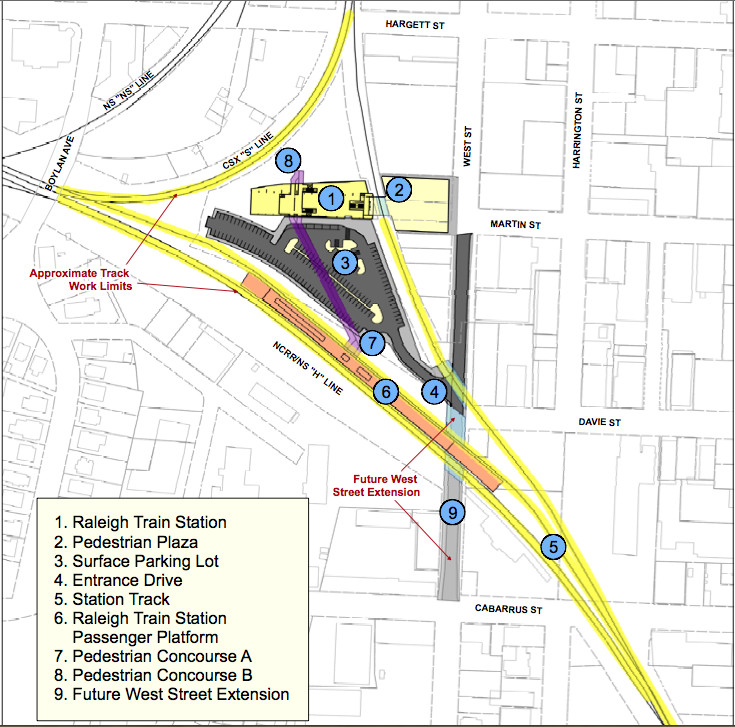Raleigh is getting a new train station.
Transit and city officials are moving forward with plans to build a Union Station in the Dillon Viaduct Building on Martin Street downtown. The public is invited to learn about the project and provide input during workshop Monday.
The project recently received $21 million federal grant to pay for the first phase of construction for the $60.5 million transit center. Raleigh voters also approved a $40 million transportation bond last October, of which $3 million will contribute to the station plan.
Date: Monday, Aug. 6
Time: 5 to 7 p.m. (open house)
Where: Raleigh Convention Center, Ballroom B
Union Station will replace the Amtrak station on Cabarrus Street, something long overdue, according to a YouTube video posted by the city. According to the video, Raleigh has the second-highest ridership among major Southeast cities. The city has outgrown the old station’s 1,800-square-foot space and limited parking lot.
Four round-trip passenger trains stop in Raleigh each day, and two additional daily Raleigh-to-Charlotte round-trip trains are planned.
“The existing station is outdated, difficult to access and overcrowded,” the video says.
The transit center will also handle the federal high-speed rail expected to come through Raleigh in the future.
The expansion is unrelated to the much-discussed Triangle Transit plans for commuter rail and expanded bus services. A sales tax has been proposed to pay for that plan, but those funds are not related to Union Station.
Ken Bowers, Raleigh’s deputy director of city planning, said the new station is needed regardless, but will be built to accommodate any future commuter rail as well.
“The project moves forward with or without commuter rail,” Bowers said. “And if commuter rail moves forward, all the better.”
The first phase of the project focuses on the site layout and rail improvements, but not the building design, Bowers said.

Layout of the new Union Station. Image provided by NCDOT.
Monday’s workshop is an open house, with no formal presentation. Residents are invited to learn about the project, view maps of the engineering work and the proposed locations of the siding, which is a separate rail track used for passing trains.
Officials from the city, North Carolina Department of Transportation and Triangle Transit will be available to answer questions.
Transit officials will use public feedback when compiling the federally required environmental impact report for Phase I. Construction on Phase I could begin in fall of 2013, according to Ryan White, project development engineer at the NCDOT Rail Division.
